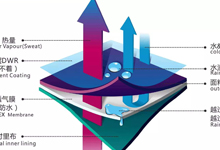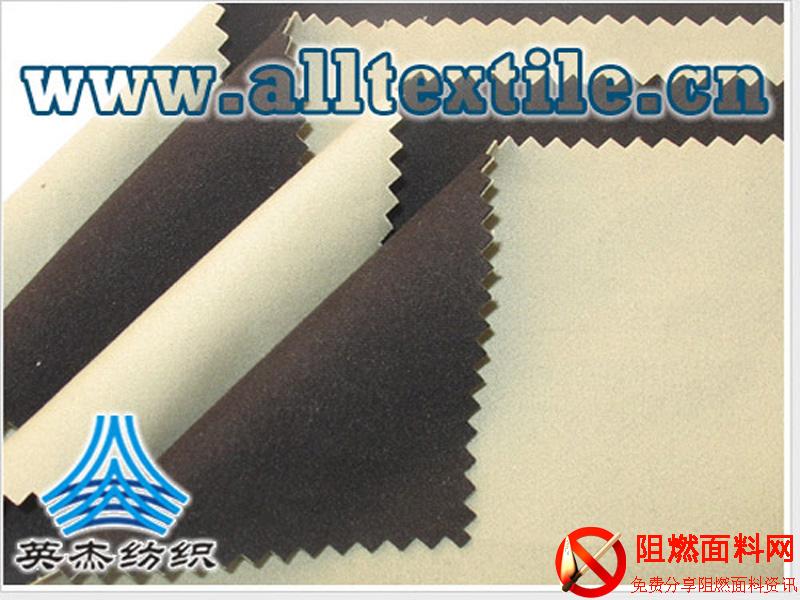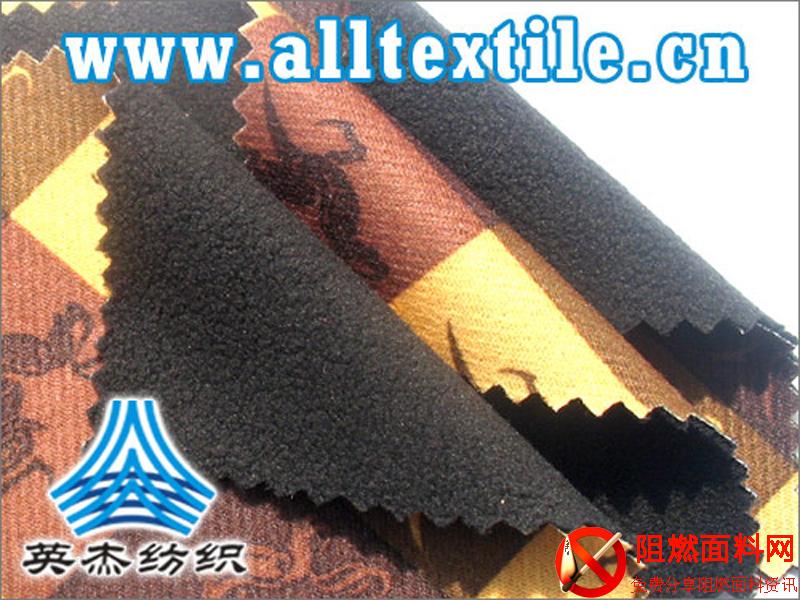What are the application fields of aramid fiber?
What are the application fields of aramid fiber?
What is aramid
The full name of aramid fiber is “aromatic polyamide fiber”, which refers to a long-chain synthetic polyamide fiber with more than 85% of the amide bonds directly connected to the benzene ring. The amide bonds connected are aromatic rings or derivatives of aromatic rings. It is flame retardant, It is a new type of special polymer material with outstanding properties such as high temperature resistance, high strength, high modulus and insulation. Currently, there are two types of aramid fibers on the market that have achieved widespread commercial application and production, namely meta-aramid fiber and para-aramid fiber.
Meta-aramid has excellent thermal stability, flame retardancy, electrical insulation, chemical stability and radiation resistance. The full name of meta-aramid is “polyisophthalyl-m-phenylenediamine” (MPIA) fiber, which is an organic polymer fiber synthesized from isophthaloyl chloride and m-phenylenediamine. Meta-aramid has long-term thermal stability, which is its most important characteristic. It can be used at high temperatures of 200°C for a long time without aging, and has excellent dimensional stability. Meta-aramid is intrinsically flame retardant, with a limiting oxygen index (LOI) >28%. It will not spontaneously ignite or melt in the air, nor will it produce droplets, and will self-extinguish upon leaving the flame. Meta-aramid has excellent electrical insulation, and the insulating paper made from it has a breakdown voltage of up to 20kV/mm. Meta-aramid has excellent corrosion resistance and radiation resistance. In addition, meta-aramid also has low rigidity and high elongation, and can be processed by conventional textile machinery.
Para-aramid has excellent properties such as high specific strength, high specific modulus, high temperature resistance and flame retardancy. Together with carbon fiber and high-strength and high-module polyethylene, it is known as the world’s three major high-performance fibers. The tensile strength of para-aramid fiber is 6 times that of steel wire, and 2 to 3 times that of glass fiber and high-strength nylon industrial yarn; its tensile modulus is 2 to 3 times that of steel wire and glass fiber, and 10 times that of high-strength nylon industrial yarn. ; Its density is only about 1/5 of steel wire. Para-aramid has good impact resistance, corrosion resistance and fatigue resistance, and is known as “ballistic fiber”. The heat resistance of para-aramid is higher than that of meta-aramid. It can still maintain its original strength after hundreds of hours at a high temperature of 200℃, and it will not decompose or melt at a high temperature of 560℃. In terms of environmental protection, the stable structure of para-aramid fiber and its resistance to degradation also determines its difficulty in later recycling and environmental impact.

Aviation sector
Aramid fiber has low density, high strength, and good corrosion resistance. It can be used to manufacture missile rocket engine casings, broadband wave-transmitting materials for aircraft and spacecraft fuselages, main wings, tails, etc., and structural components that can withstand impact forces. Aramid can also be used to make secondary structural materials for large aircraft, such as cabin doors, windows, wings, fairing surfaces, etc. It can also be used to make interior ceilings, warehouse walls, etc. to reduce their weight.
The multi-layer honeycomb structure board prepared by impregnating aramid cloth with epoxy resin to form aramid prepreg and directly bonding it with the honeycomb or foam structure has outstanding impact resistance and electromagnetic wave permeability. The super-hybrid composite laminate formed by overlapping aramid, thin aluminum plates, and epoxy weft-free fabrics and hot pressing has extremely high specific modulus and specific strength, and its fatigue life is 100 to 1,000 times that of aluminum alloy plates. Can be used on aircraft fuselages and other parts. Resin-based reinforced composite materials prepared from aramid fibers are used in aircraft bodies, which can greatly reduce the total weight of the aircraft.
Their main advantage is that they are very strong and lightweight, which can reduce the overall weight of the aircraft, increase safety, improve fuel consumption efficiency, and reduce air pollution. In addition, aramid and its composite materials are corrosion-resistant, ensuring the safety of aircraft in harsh environments without problems such as water accumulation, freezing or corrosion.
The future development trend of aramid fiber and its composite materials in aerospace structural design is also very promising. Due to the many advantages of aramid and its composite materials in aerospace structural design, they can almost replace steel and aluminum materials in terms of efficiency and safety, and can achieve more flexibility in the structural design and manufacturing process. In addition, the weight of aramid and its composites is also decreasing, which will make aircraft lighter and more maneuverable in the air.
Military field

Aramid composite materials can be used to manufacture missile solid rocket motor casings, pressure vessels, spacecraft cockpits, submarines, bulletproof armored vehicles, bulletproof cash transport vehicles, bulletproof plates, bulletproof helmets, body armor, etc.
Aramid fiber, carbon fiber and ultra-high molecular weight polyethylene fiber are known as the three major high-performance fibers. They are widely used in national defense and civilian industries and are strategic materials for a strong country and military. The products are mainly used in the fields of optical fiber cables, rope and cable webbing, skeleton materials, composite materials, friction sealing materials, textiles and bulletproof protection. The standard configuration is bulletproof vests.
Picture: Bulletproof vests and bulletproof helmets made of aramid fiber can replace old-fashioned nylon vests and tank-proof helmets in the field of defense��Adding an appropriate amount of aramid to vests and helmets can not only make them small in size and light in weight, but also increase their bulletproof performance by 40%. Soft bulletproof vests made of high-grade bulletproof aramid weft-free fabric and high-performance polyethylene film have better bulletproof performance and heat resistance than ultra-high molecular weight polyethylene fiber. Aramid fiber can also be compounded with other materials (such as metals, ceramics, etc.) to make various high-strength, impact-resistant explosion-proof tanks, bulletproof shields, bulletproof armor plates, etc. In addition, bonding aramid fiber fabric to the inner wall of the structure can effectively absorb explosion waves and prevent shrapnel damage to the human body.
Electronic and electrical fields
Because my country’s research on aramid materials started relatively late, the technology is developing rapidly. The currently developed satellite APSTAR-2R uses a honeycomb sandwich as the reflective surface of the antenna. The inner and outer skin parts of the antenna are made of para-aramid material, and the meta-position is made of honeycomb aramid. In the manufacturing process of aircraft radome, para-aramid fiber is used to take advantage of the material’s good wave transmission performance and low expansion coefficient, so the reflector frequency can meet its own structural and functional requirements. ESA has developed a two-color sub-type reflector with a diameter of 1.1m. It uses a meta-honeycomb structure in a sandwich structure and uses aramid material as the skin. The temperature of the epoxy resin in this structure can reach 25°C and the dielectric constant is 3.46. The loss factor is 0.013. The reflection loss in the transmission link of this type of reflector is only 0.3dB, and the transmission signal loss is 0.5dB.
Laminated substrates made of aramid and epoxy, phenolic, polyimide and other resins have a high linear expansion coefficient matching with ceramics. They will not cause cracking under the action of thermal expansion and contraction, and can be used to make surface mounting technology. The special printed circuit boards in it are conducive to the miniaturization and lightweight of electronic equipment. Utilizing the characteristics of high strength and high temperature resistance of aramid fiber, it is used as a “tension member” in the optical fiber to protect the small and fragile optical fiber from elongation and deformation when subjected to tensile force, and will not affect the transmission of light. Composite products of aramid fiber and carbon fiber have good processability and semiconducting properties, and can withstand high temperatures. They are often used to make materials for reducing electric fields in high-voltage devices. After being impregnated with insulating paint, aramid paper has good insulation properties and is combined with natural mica sheets to be used as insulation material for heat-resistant motors.
Aramid fibers are also widely used in electronic components such as composite films, insulating ropes/rods, circuit breakers, and brakes. For example: In a 500kV transmission line, using insulating ropes made of aramid material instead of insulating booms as load-bearing tools, and using insulating ropes to connect screw rods will help promote a safety factor of more than 3. The insulating rod is mainly a structure composed of aramid fiber and polyester fiber intertwined with each other. It is placed in a vacuum, immersed in epoxy resin material, and formed after curing. It has good corrosion resistance during use, is lightweight and stronger, and this material has good insulation properties. In 110kV lines, insulating rods are used more frequently. They have higher mechanical strength during application and have good dynamic fatigue resistance characteristics. In the manufacturing of electrical machinery, the use of aramid fiber materials can increase the strength of components and prevent serious wear on the molding surface. It replaces glass fiber in electrical equipment. The fiber content of aramid fiber is 5% and the length can reach 6.4mm. The tensile strength is 28.5MPa, the arc resistance is 192s, and the impact strength is 138.68J/m, so the wear resistance is higher.

Other areas
Aramid fiber molecules contain a large number of benzene rings. They have good chemical stability, corrosion resistance, high specific strength, light and strong, and can be used to make cables for sea vessels and deep oil wells. Utilize the properties of aramid fiber such as high temperature resistance and fatigue resistance to make higher-grade rackets, fishing rods, sleds, skis, ski poles, bows and arrows, rowing boats, golf clubs, etc. It can also be used to make mountaineering shoes with harsh sports conditions. Boots, boxing gloves, racing helmets, racing bodies, etc. Since asbestos is seriously harmful to the human respiratory tract, aramid fiber can be used to replace asbestos to make seals such as reinforced rubber sealing plates, which can be used as pads and rings for automobile brakes.
As there are more and more types of textile equipment, the production technology of the textile industry has also been increasingly developed. Aramid fabric is a type of chemical fiber that was developed early, is widely used, has large production volume, and is developing rapidly. Aramid fabric is a high-performance fiber fabric with the characteristics of heat resistance, chemical corrosion resistance, radiation resistance, flame retardant, and high strength. Therefore, it has a wide range of applications in industry, military, fire protection, aerospace and other fields.
picture
Industrial aspect: Aramid cloth can be used to make high-temperature filter materials, valve covers, sealing gaskets and other high-temperature and corrosion-resistant products. In addition, aramid cloth is also a commonly used material in textile, petrochemical, electronics, shipbuilding and other industries.
Military aspect: Aramid cloth is mainly used to make protective equipment such as body armor, anti-stab vests, and helmets. Because aramid cloth has excellent strength and heat resistance, it can effectively protect soldiers from bullets, artillery shells and other attacks.
Fire protection: Aramid cloth can be used as fireproof isolation belts, fireproof curtains and other materials. Because aramid cloth itself has flame retardant properties, it can play an effective fire prevention role after a fire occurs.
Aerospace: Aramid cloth can be used to make high-strength, high-temperature-resistant products such as aircraft seats, space suits, and parachutes. Aramid cloth can also be used as satellite sunshade material, rocket insulation material, etc.
� Function.
Aerospace: Aramid cloth can be used to make high-strength, high-temperature-resistant products such as aircraft seats, space suits, and parachutes. Aramid cloth can also be used as satellite sunshade material, rocket insulation material, etc.







